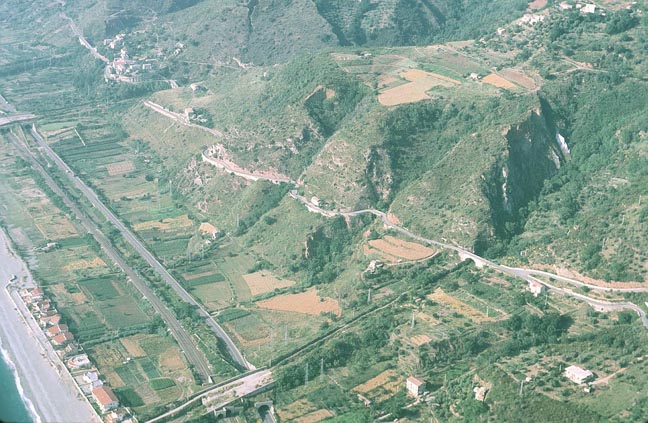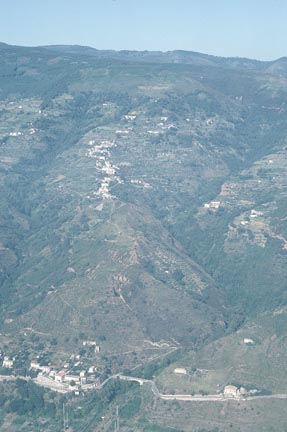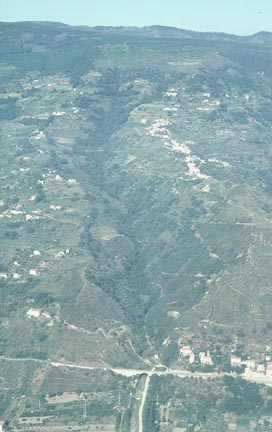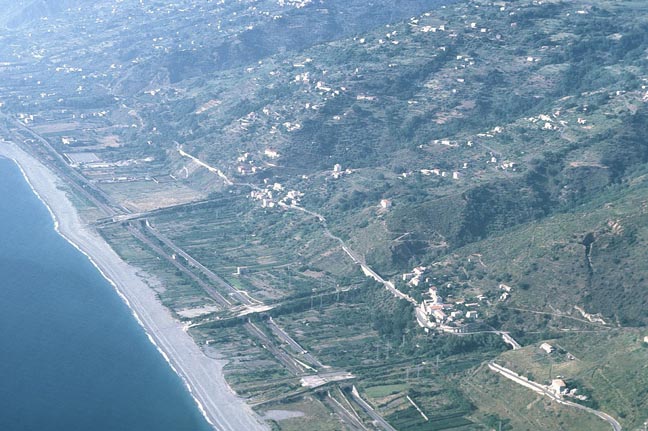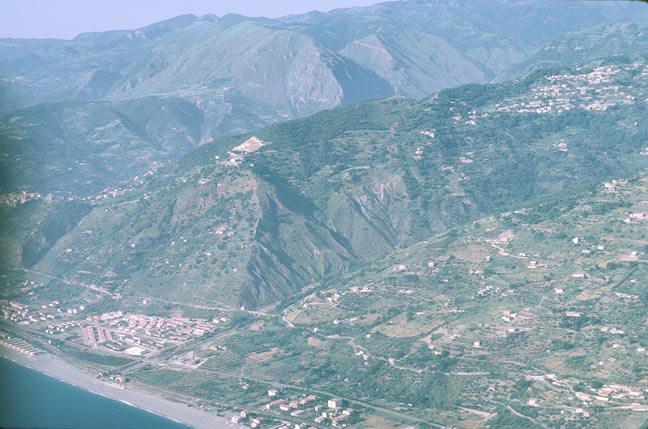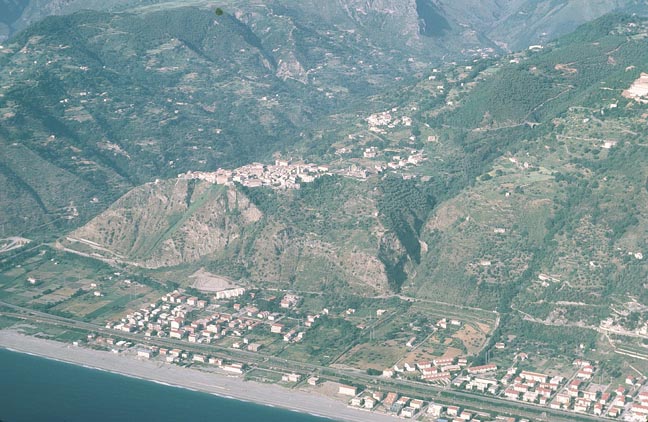
Eastward oblique aerial view of Piano Marino, the high, north-tilted surface of which is cut by the deep dark gorge, Manno Nicolo. The flat with the tower in the right center is an abrasion surface on Miocene and Pliocene sandstone. Manno Nicolo, which cuts deeply into sandstone, empties into Catacastro fiumara at the north end of Amantea. Map Sheet 1 (small | large).

